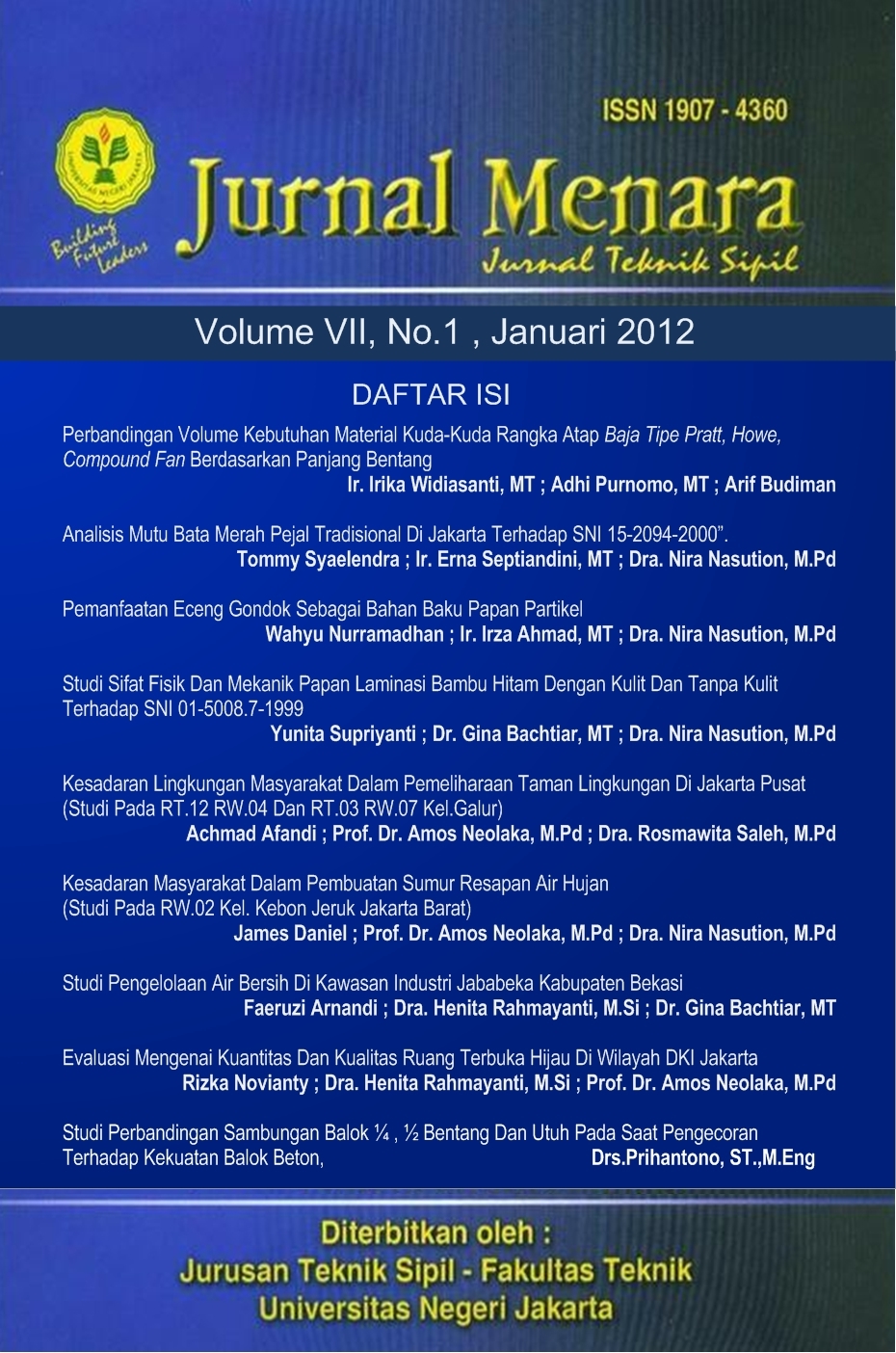ECENG GONDOK SEBAGAI BAHAN BAKU PAPAN PARTIKEL
DOI:
https://doi.org/10.21009/jmenara.v7i1.7944Keywords:
Papan Partikel, Enceng GondokAbstract
Penelitian ini bertujuan untuk mengetahui nilai dari sifat fisik kerapatan,
kadar air, pengembangan tebal, dan sifat mekanik keteguhan lentur
serta modulus elastisitas papan partikel dengan bahan baku eceng
gondok dan perekat urea formaldehida (UF) serta hardener (NH4CL)
sesuai dengan persyaratan SNI 03-2105-2006.
Dalam penelitian ini menggunakan metode eksperimen, populasi
sebanyak 7 papan dengan ukuran 30x30x1 cm, sedangkan sampel
diambil sebanyak 10 buah dari setiap 1 papan, 1 sampel untuk
kerapatan dan kadar air, 3 sampel untuk pengembangan tebal, dan 6
sampel untuk keteguhan lentur serta modulus elastisitas. Teknik
analisis data dengan menggunakan uji t, yang sebelumnya dilakukan
uji analisis persyaratan yaitu normalitas. Bahan yang digunakan dalam
penelitian ini adalah partikel eceng gondok dengan ukuran 10 mesh
dan perekat urea formaldehida (UF) sebanyak 10% serta
hardener(NH4CL) sebanyak 2%.
Kesimpulan dari penelitian ini yaitu papan partikel eceng gondok
10mesh dan UF 10% serta NH4CL 2% tidak memenuhi standar SNI 03-
2105-2006 dikarenakan sifat mekaniknya di bawah standar SNI 03-
2105-2006.
Downloads
Published
Issue
Section
License
Authors who publish with this Journal agree to the following terms:
- Author retain copyright and grant the journal right of first publication with the work simultaneously licensed under a creative commons attribution licensethat allow others to share the work within an acknowledgement of the work’s authorship and initial publication of this journal.
- Authors are able to enter into separate, additional contractual arrangementfor the non-exclusive distribution of the journal’s published version of the work (e.g. acknowledgement of its initial publication in this journal).
- Authors are permitted and encouraged to post their work online(e.g. in institutional repositories or on their websites) prior to and during the submission process, as it can lead to productive exchanges, as well as earlier and greater citation of published works.











